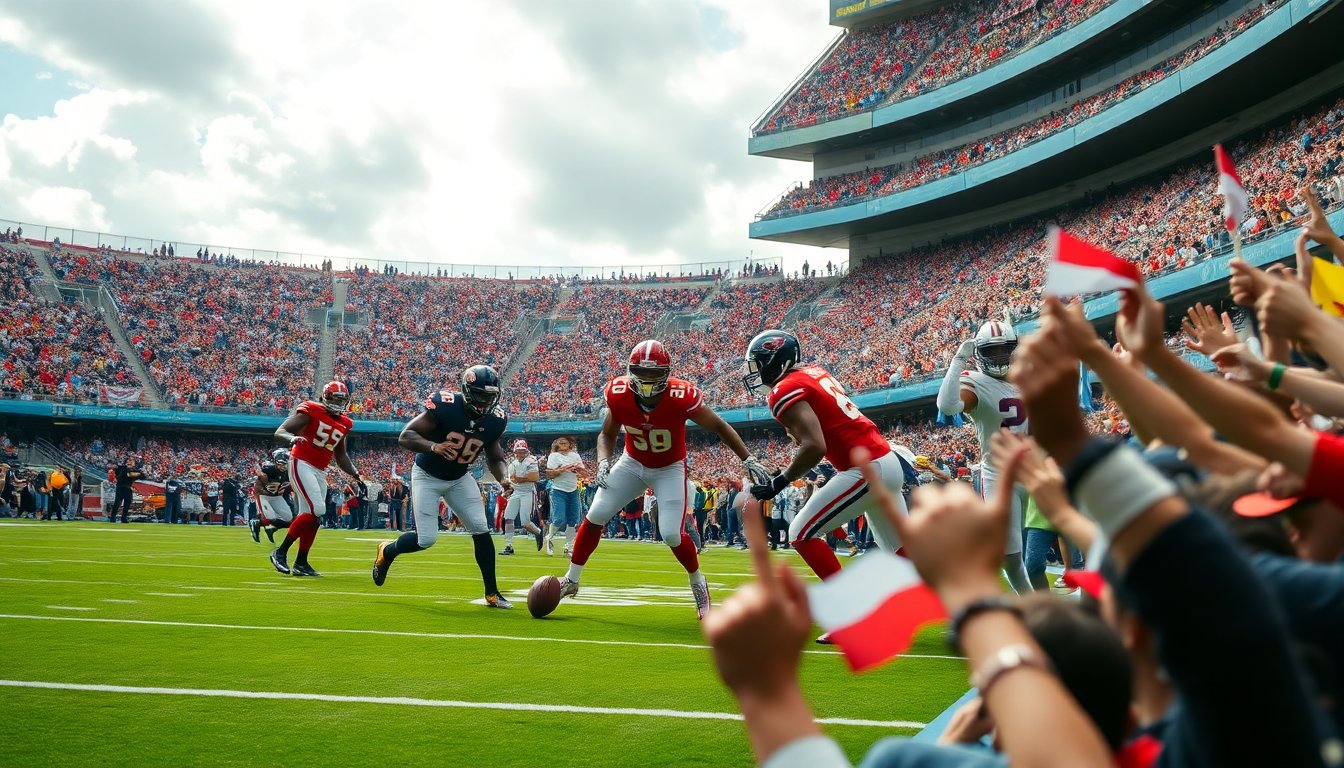Table of Contents
The National Football League (NFL) exemplifies the evolution of sports in America, transforming from an athletic contest into a symbol of cultural significance and commercial success. This transformation reflects not only the dynamics of the sport but also its intricate relationship with American society.
In recent times, the NFL has experienced remarkable growth in audience and financial metrics. For instance, 18.8 million viewers tuned in for a Monday night game, underscoring football’s unmatched popularity. This surge in interest aligns with broader trends that have elevated the NFL’s status, influencing television ratings and merchandise sales.
The NFL’s journey to prominence
Initially, the NFL was viewed as a niche sport, often overshadowed by the major events like the World Series and NBA Finals. However, strategic initiatives to enhance its appeal significantly contributed to its growth.
By the mid-20th century, the NFL capitalized on the expanding television market, engaging viewers with compelling narratives and memorable moments. Events like the Super Bowl evolved into cultural spectacles, attracting millions of viewers and advertisers.
Strategic marketing and branding
A critical factor in the NFL’s ascent has been its aggressive marketing strategies. The league’s ability to forge emotional connections with fans has proven pivotal. By promoting player and coach personalities, the NFL crafted narratives that resonate with audiences.
This branding extends beyond the field, involving fan engagement strategies such as social media campaigns and community outreach programs, which solidify the NFL’s presence in everyday life.
The introduction of fantasy football also significantly broadened the league’s reach.
By allowing fans to engage in a simulated management experience, the NFL attracted demographics traditionally less interested in sports, thus expanding its fan base. This engagement translated into increased viewership and a surge in merchandise sales and advertising revenue.
The commercialization of football
Today, the NFL stands as a commercial powerhouse, generating substantial revenues that surpass those of other sports leagues. In 2025, the league reported earnings of approximately $23 billion, highlighting its financial strength. This figure stems from lucrative television contracts, sponsorship deals, and merchandise sales, all integral to the league’s operations.
Global outreach and expansion
Furthermore, the NFL has made significant strides in expanding its international presence. With games held in various countries, including recent matchups in London and Mexico City, the league seeks to tap into new markets and cultivate a global fan base. This ambitious strategy not only enhances brand awareness but also fosters a sense of community among international fans passionate about American football.
The league’s commitment to innovation and adaptation is evident through ongoing initiatives aimed at engaging younger audiences. By leveraging technology and creating interactive experiences, the NFL aims to remain relevant in an increasingly digital landscape. This adaptability is essential to maintaining its status as a cultural phenomenon amid changing entertainment preferences.
The NFL’s journey from a modest sports league to a commercial titan is marked by strategic marketing, innovation, and a deep connection with its fan base. As football continues to evolve, its impact on American culture and society will undoubtedly remain significant, captivating audiences for generations. The NFL’s narrative transcends sports; it embodies the enduring spirit of competition, community, and the unifying power of athletics.





